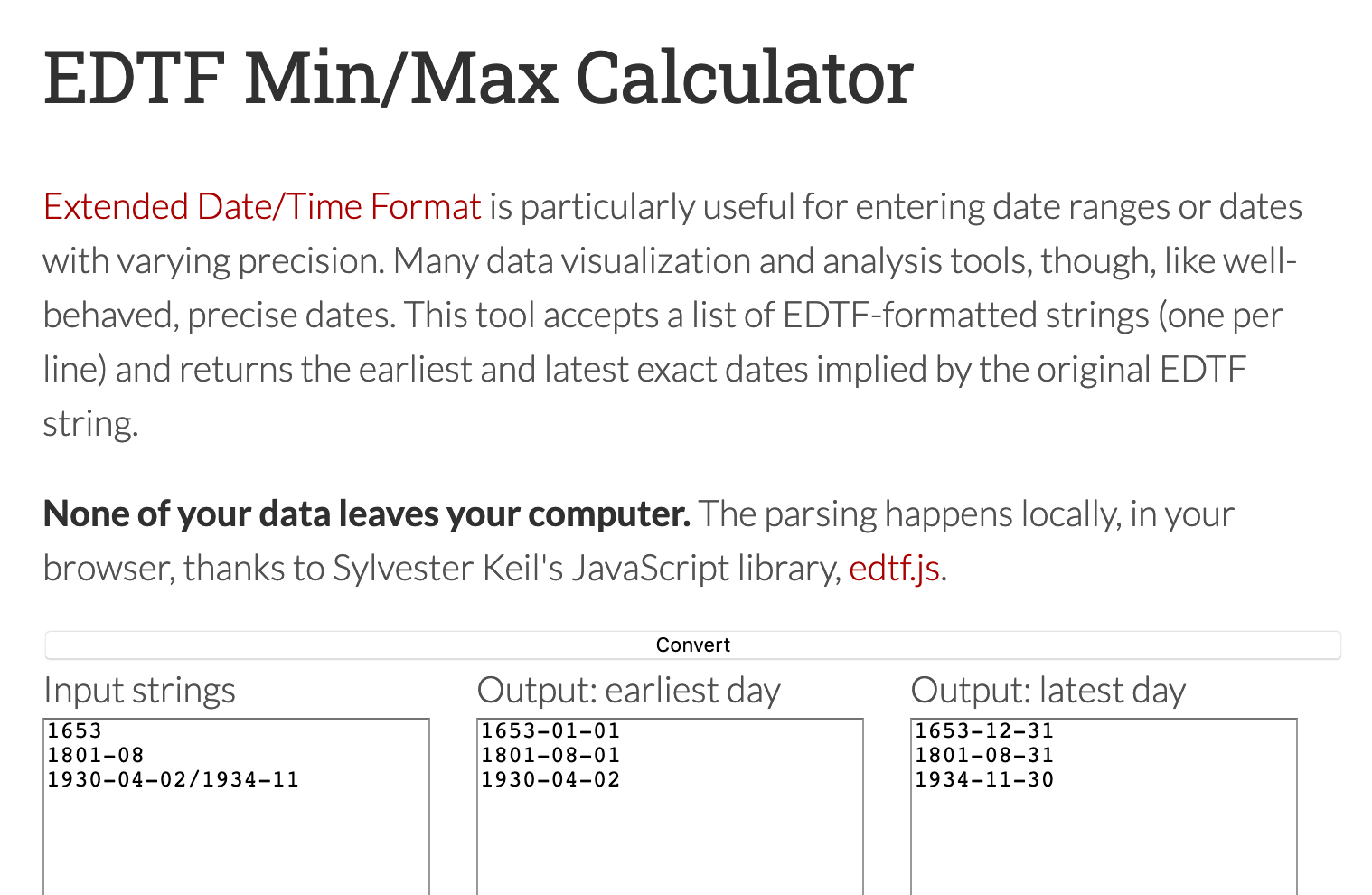Convert EDTF to Regular Dates Without Needing to Code
TL;DR: I’ve made a small, in-browser utility for converting EDTF dates to pairs of date boundaries without needing to code.

A screenshot of the EDTF min/max calculator
Many readers of this blog will be familiar with the “preferred” way to specify dates for computers: ISO 8601, or YYYY-MM-DD, such as the date of this post, 2021-03-20.
This is great when you have an exact date you want to specify, but as is often the case in messy historical / humanisitc data, we rarely have such precision. We may only know, for example, that:
- a painting was made at some point in 1653
- a book was published on some day in August 1801
- a person of interest arrived at a city on April 2, 1930, and left sometime in November of 1934
- a probate inventory has only a partially legible date written on it: 1731-02-1…[something]
One strategy to deal with assertions like these when computing is to create a pair of YYYY-MM-DD dates representing the earliest and latest possible dates given our range of certainty. Thus:
- The painting was made between 1653-01-01 and 1653-12-31
- The book was published between 1801-08-01 and 1801-08-31
- The person was within the city at some time between 1930-04-02 and 1934-11-30
- The probate inventory was made between 1731-02-10 and 1731-02-19
With these boundaries, we can search through uncertain dates, visualize possible time ranges and overlaps with tools like Palladio, and more. But it is a tremendous pain to manage so many different columns during data entry and cleaning.
The Extended Date/Time Format (EDTF) Specification (core features of which are adopted by ISO 8601-2,) is an expressive update to the strict precision of ISO 8601-1, specifying notation for dates and date ranges of varying precision and certainty. From our examples above, we could succinctly write:
- 1653
- 1801-08
- 1930-04-02/1934-11
- 1731-02-1X
and tools / code libraries for parsing EDTF can understand each of these cases and compute the possible earliest/latest dates (along with many other properties) for further use in search, computing, or visualization. My EDTF converter lets you paste in a list of EDTF dates and it’ll calculate the earliest and latest date boundaries (as well as alert you if any of your date strings are invalid.)
There’s a lot more to EDTF than the examples shown here (including qualifications, seasons, open-ended intervals, and more) and the various parsing libraries can do more than pull out early/late date boundaries. I recommend you read more about the EDTF spec and try out the the Python or JavaScript EDTF libraries.
